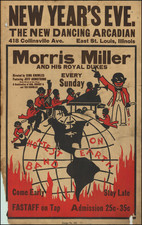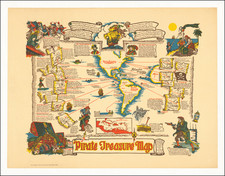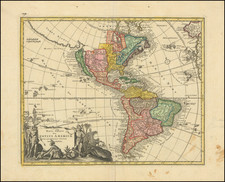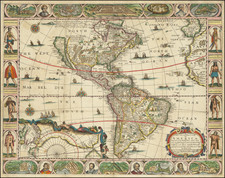Johann Walch's 1819 map of America, published in Augsburg, offers a glimpse into the evolving geographical understanding of the era. The map is distinguished by its detailed portrayal of the northwest coast of America and continguous parts of the Pacific Northwest, capturing both known facts and prevailing speculations.
The representation of the Northwest Passage, a theorized route connecting the Atlantic and Pacific Oceans through North America's northern part, stands out. This imagined passage had long tantalized explorers, but a practical route wouldn't be realized until the 20th century.
Another intriguing feature is the depiction of "Quivira," the mythical city of gold that Spanish explorers pursued in the 16th century. Its presence on the map underlines the influence of earlier explorations and the myths that persisted in geographical representations.
The map appears to sidestep the findings of the Lewis & Clark expedition from 1804-1806, a pivotal exploration that significantly mapped the Pacific Northwest. Yet, the intricate river system in the northwest suggests that Walch might have been somewhat aware of these interior findings.
In contrast, the influence of James Cook and George Vancouver is evident. Their explorations in the late 18th century expanded European understanding of the Pacific Northwest coast, and Walch's inclusion of the Sandwich (Hawaiian) Islands reflects Cook's discovery, as he was the first European to make contact there.
The map's depiction of numerous Hudson's Bay Company (HBC) houses underscores the significant role of the HBC in North America. Founded in 1670, the HBC controlled a vast territory known as Rupert's Land and established a series of trading posts that anchored the fur trade with indigenous communities. This trade, driven by European demand for fur hats, reshaped the economic landscape of North America, influencing both European traders and indigenous societies.
Johann, or Johannes, Walch (1757-1816) was a painter and engraver. He was well-known for painting miniature portraits, having trained in Geneva, Venice, and Rome. Walch published several atlases and sheet maps. As with his atlases, many of Walch’s maps were reprinted after his death.











![[ Pacific Ocean and America -- The West Indies ] Descripcion De Las Yndias Ocidentales](https://storage.googleapis.com/raremaps/img/small/95683.jpg)
![[The First Maps Printed Color] Cartes en Couleur des Lieux Sujets aux tremblements de Terre Dans toutes les parties du Monde Selon le Sisteme de l’impulsion Solaire](https://storage.googleapis.com/raremaps/img/small/52293op.jpg)

